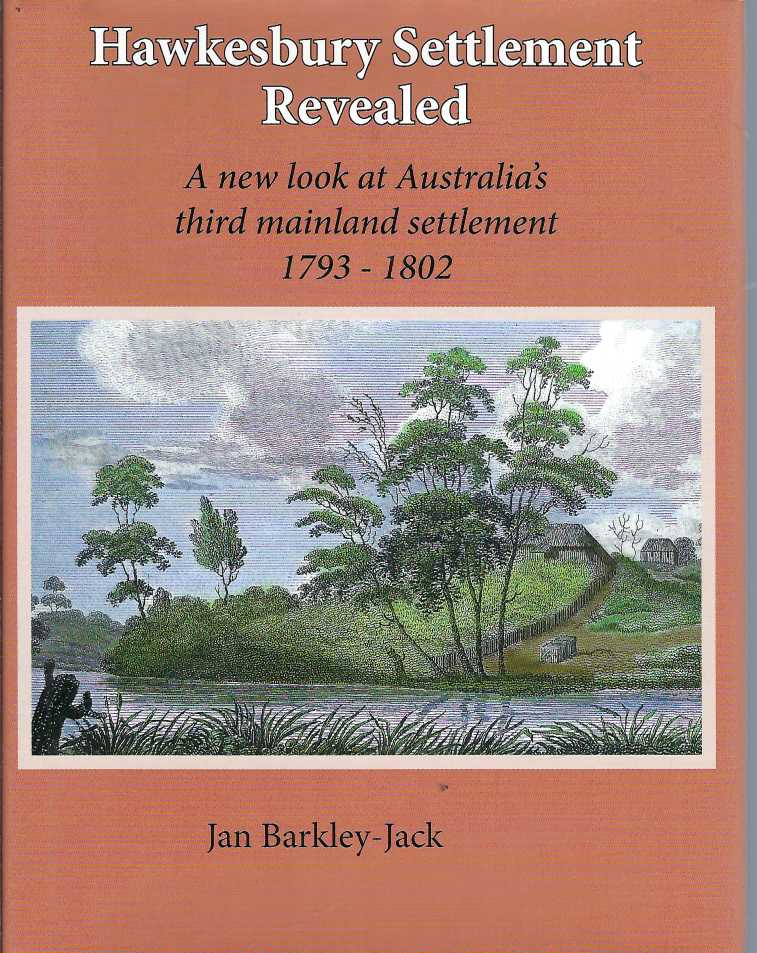First Edition. This book has exciting new material about Australias beginnings, and in particular about the third mainland settlement which grew at the River Hawkesbury. It tackles controversial themes, including the meeting of European and Indigenous cultures, and delves into the local results of the influence of the French Revolution. 488 p. : ill. (some col.), facsims., maps ; 24 cm. #021021
Pt.1. Beginnings of settlement
Evolution of the Hawkesbury grants, 1793-1794
Creating a negative stereotype
Vanishing soldier allotments, 1795
Ex-convict continuity and diversity, 1795-1802
Pt.2. Settlers themselves
Working farmers, prosperous settlers and John Stogdell, exconvict
Debt despite work
Hawkesbury indigenous culture meets colonial practice
Lawlessness: European crime, protest and the radical thought of John Harris, exconvict
Invisible women and Sarah Cooley, ex-convict.
“While Australia’s early Hawkesbury settlement (the Mulgrave Place district) is recognized as having special importance for its part in ensuring the survival of the colony, historians for the last 200 years have continued to denigrate the first settlers there. Lazy, lawless, drunken, and in debt is the image that has defined the ex-convict settlers. In this book, the cultural bias of the contemporary chroniclers is re-examined. Hawkesbury Settlement Revealed contains exciting new material about Australia’s beginnings, and in particular, about the third mainland settlement which grew at the River Hawkesbury. The book tackles controversial themes, including the meeting of Indigenous and European cultures. It even delves into the local results of the influence of the French Revolution. A specific focus on the varying roles in women’s lives is highlighted, which extended far beyond domesticity. Between 1797 and 1802, at least eleven women at Hawkesbury were granted their own title to land. Eight of these were ex-convicts. Of land holders, particular attention is paid to Sarah Cooley and John Stogdell, who were exceptional transportees. Stogdell developed an empire so vast that it influenced not just the dynamics of the Hawkesbury settlement, but also the 18th-century Sydney business scene. Their achievements stand alongside the fascinating glimpses of the daily lives of hundreds of the ordinary poor and ex-convict Hawkesbury farming families. The historically rich detail of the research in this book provides a new image of the Hawkesbury settlement.”
Hawkesbury Settlement Revealed: A New Look at Australia’s Third Mainland Settlement 1793-1802
$50.00
Sold Out
Additional Information
| Author | Barkley-Jack, Jan |
|---|---|
| Number of pages | 488 p. : ill. (some col.), facsims., maps ; 24 cm. |
| Publisher | Rosenberg Publishing, Sydney |
| Year Published | 2009 First Edition |
| Binding Type | Hardcover in Dustjacket |
|---|---|
| Book Condition | Fine |
